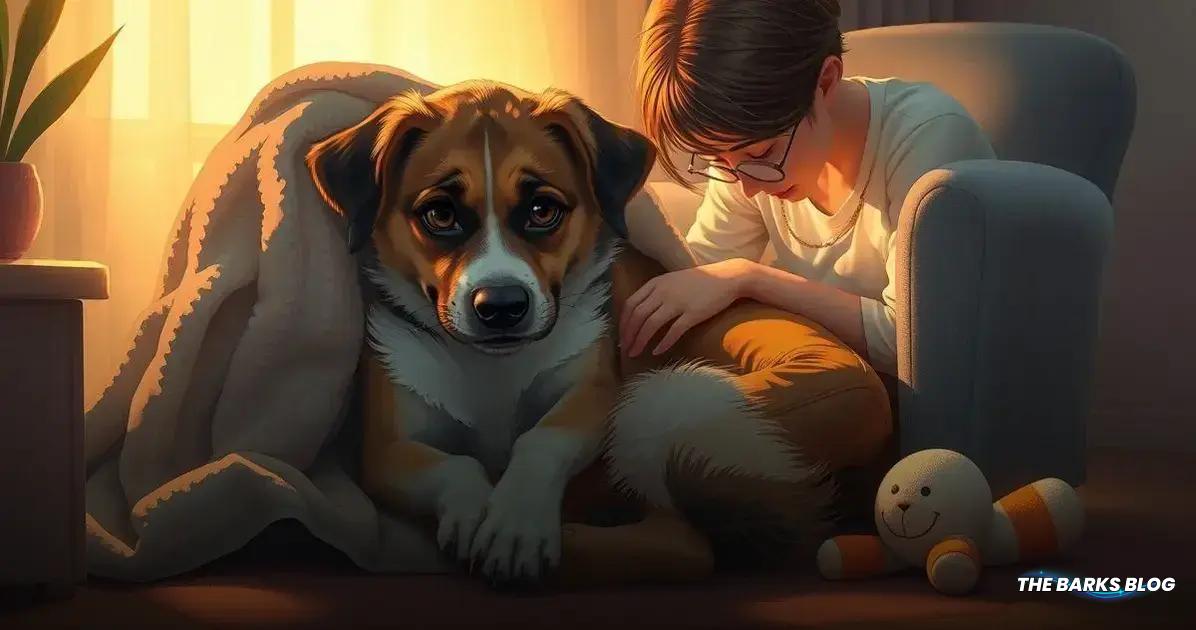PTSD in dogs can result from traumatic experiences, leading to symptoms like timidity, aggression, and changes in behavior. To support a dog with PTSD, owners should consider medication, desensitization techniques, and engaging in positive activities to help rebuild trust. Recovery varies, but with patience and professional guidance, dogs can improve their quality of life despite their condition.
PTSD in dogs is a serious condition that can affect our furry friends just like it does humans. Understanding how to identify and help dogs with PTSD is essential for their well-being.

Can Dogs Have PTSD?
Yes, dogs can indeed experience PTSD, a condition that has only been officially recognized in them over the past decade. It is estimated that between 5-17% of dogs may suffer from this condition. Just like humans, dogs can develop PTSD after experiencing or witnessing traumatic events.
Stressful situations that can lead to PTSD in dogs include:
- Dog fighting: Dogs that have been involved in or used as bait in fights are particularly susceptible.
- Severe abuse: Dogs that have faced extreme neglect or abuse often carry the scars of their past.
- Puppy mills: Dogs that are not cared for properly during their formative years may develop PTSD.
- Traumatic events: Surviving incidents like house fires or car accidents can leave lasting impacts.
- Working in stressful environments: Dogs that serve in roles such as police or rescue may be exposed to traumatic scenarios.
- Intense medical treatment: Dogs undergoing painful or prolonged medical procedures can also develop PTSD.
- Attacks from other dogs: A single attack can lead to significant fear and anxiety.

Signs of PTSD in Dogs
If you suspect that your dog may be suffering from PTSD, it’s essential to recognize the signs.
Dogs with PTSD may exhibit a variety of behavioral changes, including:
- Intense abandonment discomfort: These dogs may become extremely distressed when left alone, showing signs of panic.
- Timidity: A dog with PTSD may become overly shy or fearful, avoiding social interactions.
- Aggressive behavior: Some dogs may react aggressively towards people or other animals, which can be a defense mechanism.
- Disturbed sleep patterns: Dogs suffering from PTSD might have trouble sleeping, experiencing nightmares or restlessness.
- Intense reactions: They may react strongly to specific places, sounds, or people that remind them of their trauma.
- Excessive panting: Dogs may pant excessively even in calm situations, indicating anxiety or stress.
- Disinterest in food or treats: Affected dogs might lose interest in eating, which can lead to weight loss and health issues.
- Disinterest in play: Dogs with PTSD may no longer enjoy activities they once loved, becoming withdrawn.
- Depression: They may appear sad or not themselves, lacking the usual energy and enthusiasm.
For working dogs, such as military or police dogs, you might notice them shutting down, refusing to work, or becoming hyper-vigilant in certain situations.

How to Help a Dog with PTSD
Helping a dog with PTSD requires patience, understanding, and a tailored approach that mirrors some of the techniques used for humans.
Here are several effective strategies:
Medication
If your dog’s PTSD is severe, medication may be necessary to help alleviate anxiety and stabilize their mood. Anti-anxiety medications can provide relief from the physical symptoms of PTSD, allowing the dog to engage in behavioral therapy. While medication alone won’t cure PTSD, it can be a vital part of a comprehensive treatment plan.
Desensitization
Desensitization involves gradually exposing your dog to the triggers of their anxiety in a controlled manner. Work with a veterinarian or a qualified animal behaviorist to identify the triggers. For example, if your dog is afraid of loud noises, start by playing recordings of those sounds at a low volume. Gradually increase the volume over time while rewarding your dog for remaining calm. This process helps the dog build tolerance to their triggers.
Having Fun
Engaging your dog in enjoyable activities can significantly improve their mood and behavior. Playtime, praise, and affection can help rebuild trust and confidence. Ensure your dog receives a healthy diet and regular exercise, tailored to their breed needs. Participating in fun activities, like trick training or nose work, can provide mental stimulation and strengthen your bond.
Remember, a dog with PTSD may not fully recover, but with your love and support, their quality of life can improve. Pay attention to their triggers and be patient as they navigate their healing journey.
Conclusion
Understanding PTSD in dogs is crucial for providing the care and support they need.
While a dog with PTSD may face ongoing challenges, it’s important to remember that with the right interventions, including medication, desensitization, and engaging activities, their quality of life can improve significantly.
Patience, love, and a supportive environment can help your furry friend navigate their trauma and lead a happier, healthier life.
If you suspect your dog is suffering from PTSD, seeking professional guidance from a veterinarian or animal behaviorist is a vital step toward helping them heal.
FAQ – Frequently Asked Questions about PTSD in Dogs
What is PTSD in dogs?
PTSD in dogs is a psychological condition that can develop after experiencing or witnessing traumatic events, similar to how it affects humans.
What are the common signs of PTSD in dogs?
Common signs include intense abandonment discomfort, timidity, aggressive behavior, disturbed sleep patterns, excessive panting, and disinterest in food or play.
Can all dogs develop PTSD?
While any dog can potentially develop PTSD, it is more common in those that have experienced severe trauma, abuse, or neglect.
How can I help my dog with PTSD?
You can help your dog by providing a safe environment, engaging in desensitization techniques, using medication if necessary, and ensuring they have plenty of fun and exercise.
Is medication necessary for dogs with PTSD?
Medication may be necessary for dogs with severe PTSD to help manage anxiety and allow them to participate in behavioral therapy.
Should I consult a vet if I suspect my dog has PTSD?
Yes, consulting a veterinarian or an animal behaviorist is essential for getting a proper diagnosis and treatment plan for your dog.




